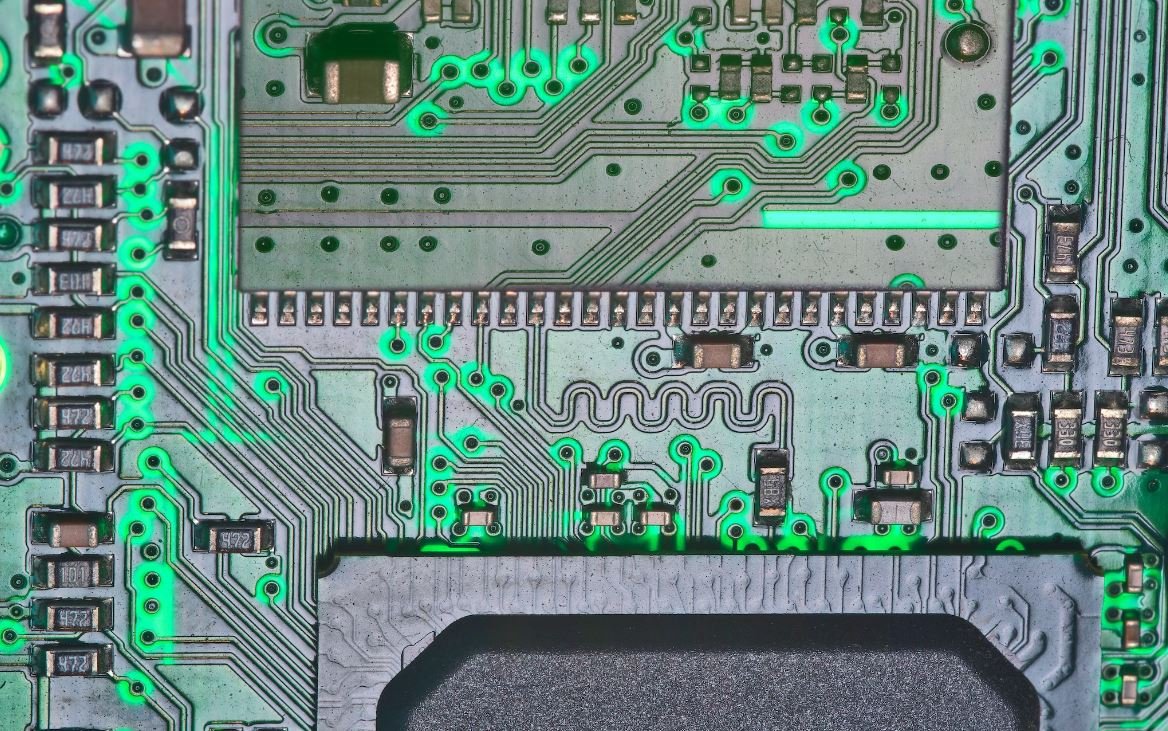Can Photosynthesis Generate Electricity?
Photosynthesis is the process by which plants convert sunlight, water, and carbon dioxide into glucose, releasing oxygen as a byproduct. It is a crucial process for sustaining life on Earth, providing the oxygen we breathe and the food we eat. But can this natural phenomenon also be harnessed to generate electricity? Let’s explore.
Key Takeaways:
- Photosynthesis is the process through which plants convert sunlight, water, and carbon dioxide into glucose.
- Photosynthesis primarily produces chemical energy in the form of glucose, rather than direct electrical energy.
- Some scientists are researching ways to harness the photosynthetic process to generate electricity.
Photosynthesis primarily produces chemical energy in the form of glucose, which is used by plants as a source of fuel for various metabolic processes. However, the direct generation of electrical energy through photosynthesis is a complex challenge. While plants produce small electric currents during photosynthesis, these currents are typically too weak to be harnessed effectively.
One interesting approach to harness the power of photosynthesis is through bio-solar cells. These cells, inspired by natural photosynthetic processes, aim to use photosynthetic molecules or organisms to convert sunlight into electricity. By combining biological components like pigments or proteins with synthetic materials, researchers hope to develop more efficient ways of generating electricity from sunlight.
| Photosynthesis | Solar Cells | |
|---|---|---|
| Primary Function | Convert sunlight into chemical energy (glucose) | Convert sunlight into electrical energy (direct current) |
| Efficiency | Lower efficiency due to energy loss during the conversion process | Higher efficiency in converting sunlight into electrical energy |
| Environmental Impact | Produces oxygen, reduces carbon dioxide, and contributes to a sustainable ecosystem | Requires precious metals and rare resources, can generate waste |
While efforts to generate electricity directly from photosynthesis are ongoing, it is essential to note that solar cells are currently the most viable and efficient technology for harnessing solar energy. Solar cells, also known as PV (photovoltaic) cells, directly convert sunlight into electrical energy using semiconductor materials. They have a higher efficiency in converting sunlight into electricity compared to photosynthesis-based systems.
Current Research and Future Possibilities
Researchers are actively exploring ways to enhance the efficiency of photosynthetic systems for electricity generation. Some of the current areas of focus include:
- Developing bio-solar cells that combine the advantages of traditional solar cells with the natural processes of photosynthesis.
- Exploring genetically modified organisms that can optimize the photosynthetic process for electricity production.
- Investigating new materials and technologies that can efficiently capture and store energy from sunlight.
| Advantages | Challenges | |
|---|---|---|
| Advantages | Renewable source of energy | Low energy conversion efficiency |
| Challenges | Could contribute to sustainable energy solutions | Complex and costly implementation |
While the potential of generating electricity from photosynthesis is an intriguing concept, it is important to recognize the current limitations and challenges associated with this approach. The conversion efficiency of photosynthesis is relatively low compared to traditional solar cells, and implementing large-scale photosynthetic electricity generation systems would require significant investment and infrastructure development.
Nevertheless, research into photosynthetic electricity generation shows promise for the future of renewable energy. As scientists continue to uncover more about photosynthetic processes and advance their understanding of bio-solar cells, we may eventually witness breakthroughs that make harnessing electricity from photosynthesis a practical and sustainable reality.
In Conclusion
While photosynthesis primarily produces chemical energy in the form of glucose, researchers are actively exploring ways to harness the process to generate electricity. While direct electricity generation from photosynthesis is still a complex challenge, the development of bio-solar cells and ongoing research into enhancing photosynthetic systems provide hope for a future where we can utilize this natural process for sustainable energy.

Common Misconceptions
Misconception 1: Photosynthesis can directly generate electricity
One common misconception is that photosynthesis can directly produce electricity. While it’s true that photosynthesis is a process that converts light energy into chemical energy, it does not generate electricity in the form most people think of. Photosynthesis occurs naturally in plants and algae, and it is primarily used by these organisms to produce glucose for growth and energy. However, this process cannot be directly harnessed to generate electricity.
- Photosynthesis is a natural process that converts light energy into chemical energy
- It is used by plants and algae to produce glucose for growth and energy
- Photosynthesis cannot directly generate electricity
Misconception 2: Solar panels are powered by photosynthesis
Another misconception is that solar panels, which do generate electricity from sunlight, are powered by photosynthesis. While solar panels and photosynthesis both involve sunlight, they are fundamentally different processes. Solar panels contain photovoltaic cells that directly convert sunlight into electricity by using the photoelectric effect, which is different from the chemical reactions involved in photosynthesis. Therefore, it is incorrect to say that solar panels are powered by photosynthesis.
- Solar panels use photovoltaic cells to convert sunlight into electricity
- Photovoltaic cells utilize the photoelectric effect
- Solar panels are not powered by photosynthesis
Misconception 3: Photosynthesis is a source of unlimited energy
Some people mistakenly believe that photosynthesis is a source of unlimited energy that can be continuously tapped into. While photosynthesis is an important natural process, it has its limitations. The rate of photosynthesis is influenced by factors such as the availability of sunlight, carbon dioxide, and other nutrients. Additionally, photosynthesis requires energy-consuming processes to convert carbon dioxide and water into glucose. These limitations make it challenging to rely solely on photosynthesis as an unlimited source of energy.
- Photosynthesis has limitations in terms of the availability of sunlight, carbon dioxide, and other nutrients
- Energy-consuming processes are needed for photosynthesis to occur
- Photosynthesis cannot be relied upon as an unlimited source of energy
Misconception 4: Photosynthesis can be used to power electronic devices
Another misconception is that photosynthesis can be used to directly power electronic devices without the need for batteries or other energy storage systems. In reality, photosynthesis is an inherently inefficient process when it comes to generating electricity. The energy produced through photosynthesis is primarily used by plants and algae for their own growth and metabolic activities, such as producing glucose. Therefore, using photosynthesis to power electronic devices directly is not viable without significant advancements and changes in technology.
- Photosynthesis is an inefficient process for generating electricity
- The energy produced through photosynthesis is primarily used for plant and algae growth
- Directly using photosynthesis to power electronic devices is not currently viable
Misconception 5: Photosynthetic organisms can replace traditional energy sources
Some individuals have the misconception that photosynthetic organisms, such as algae or plants, can completely replace traditional energy sources like fossil fuels or nuclear power. While photosynthetic organisms have the ability to convert sunlight into chemical energy, their energy output is much lower compared to conventional energy sources. To rely solely on photosynthetic organisms as a replacement for traditional energy sources would require vast amounts of land, water, and infrastructure, making it currently impractical on a large scale.
- Photosynthetic organisms have a lower energy output compared to traditional energy sources
- Relying solely on photosynthetic organisms would require significant land, water, and infrastructure
- Replacing traditional energy sources with photosynthetic organisms is currently impractical on a large scale

Introduction
Photosynthesis is the vital process through which plants, algae, and some bacteria convert light energy into chemical energy, resulting in the production of glucose and oxygen. However, recent advancements have explored the concept of harnessing photosynthesis to generate electricity. In this article, we will present 10 fascinating examples that illustrate the potential of photosynthesis as a renewable energy source.
1. Power Output of Photosynthetic Solar Cells
Photosynthetic solar cells, also known as bio-solar cells, utilize living organisms to harvest sunlight and generate electrical current. Researchers have achieved remarkable power outputs, with some cells generating up to 200 microwatts of electricity per square centimeter.
2. Efficiency Comparison: Photosynthesis vs. Traditional Solar Cells
When comparing the efficiency of photosynthetic solar cells to traditional silicon-based solar cells, the former can reach an efficiency of around 0.1%, while the latter typically achieves efficiencies of 20-25%. Although photosynthetic solar cells are less efficient, their potential for low-cost production and environmental sustainability makes them an exciting avenue for exploration.
3. Electricity Production from Artificial Leaves
Artificial leaves, inspired by the process of photosynthesis, have been developed to generate electricity. These innovative devices use sunlight to split water molecules into hydrogen and oxygen, and subsequently, generate power through fuel cells. With optimized materials, they have been able to achieve an impressive conversion efficiency of up to 5%.
4. Energy Production in Chloroplast-Inspired Nanodevices
Nanodevices mimicking the structure and functionality of chloroplasts have been created to generate electricity from light. These tiny devices can convert photons into electrical energy, simulating nature’s own photosynthetic work. With advancements in nanotechnology, efficiency rates of these devices have reached almost 70%, showcasing their tremendous potential.
5. Electrogenic Algae Producing Bioelectricity
Electrogenic algae, such as the green microalgae Chlamydomonas reinhardtii, produce small electric currents during photosynthesis. Recent experiments demonstrated that when exposed to light, these microalgae generated a voltage of up to 600 millivolts, opening new possibilities for bioelectricity generation.
6. The Fascinating World of Microbial Fuel Cells
Microbial fuel cells utilize microorganisms to convert light energy into electricity. In one experiment, photosynthetic bacteria were used to generate a significant power density of 20 watts per square meter. This development shows the potential of photosynthesis not only in plants but also in microbial systems.
7. Photosynthetic Bacteria in Powering Electronic Devices
Researchers have successfully harnessed the power of photosynthetic bacteria to generate electricity and power small electronic devices. By incorporating these bacteria into a biophotovoltaic cell, they were able to produce enough energy to run a digital clock, showcasing the adaptability of photosynthesis as a power source.
8. Leaf-Like Solar Cells
Inspired by the structure and function of leaves, scientists have developed leaf-like solar cells that can mimic photosynthesis and generate electricity. These solar cells, resembling the natural process, utilize sunlight to produce charge separation and electrical current, further progressing the field of bio-inspired energy production.
9. Encapsulating Photosynthetic Pigments for Enhanced Electricity Generation
Researchers have discovered that encapsulating photosynthetic pigments, such as chlorophyll, in nanoscale structures can improve the efficiency of electricity generation. This innovative approach has increased the current generated from photosynthesis by up to 8 times, further solidifying the potential of this renewable energy technology.
10. Artificial Photosynthesis for Electrical Power
Artificial photosynthesis, a field aiming to replicate the natural process on a larger scale, can potentially generate massive amounts of electrical power. Various approaches, such as using catalysts to speed up the reaction and capturing carbon dioxide, have shown promising results in efficiently converting sunlight into electricity.
Conclusion
Exploring the ability of photosynthesis to generate electricity has yielded numerous intriguing possibilities. While still in the early stages, the research and development of photosynthetic-based energy systems hold significant promise for a sustainable future. Incorporating nature’s efficient conversion of light into electrical power opens up a new realm of possibilities for renewable energy generation.
Frequently Asked Questions
Can photosynthesis generate electricity?
How does photosynthesis work?
Photosynthesis is the process by which green plants and some other organisms convert light energy into chemical energy, ultimately leading to the production of glucose and oxygen. It takes place in the chloroplasts of plant cells, specifically in the chlorophyll pigments.
What is electricity?
Electricity is a form of energy resulting from the flow of electric charge. It is commonly used to power devices, generate light, and run various appliances. It can be produced using various methods such as chemical reactions, electromagnetic induction, and, in some cases, photosynthesis.
Can photosynthesis directly generate electricity?
Photosynthesis itself does not directly generate electricity. Instead, it converts light energy into chemical energy in the form of glucose. This chemical energy stored in plants can be used as a source of energy for various purposes, including the generation of electricity through other processes.
Are there any methods to convert photosynthesis into electricity?
Yes, there are technologies being developed that aim to harness the energy obtained through photosynthesis and convert it into electricity. These methods involve using specialized devices such as bio-photovoltaic cells or artificial photosynthesis systems that mimic the process of natural photosynthesis.
What are bio-photovoltaic cells?
Bio-photovoltaic cells (BPV) are devices that utilize certain microorganisms, such as algae or bacteria, to convert sunlight into electricity through a process similar to natural photosynthesis. These cells incorporate photosynthetic organisms and electrodes to capture and transfer the electrons generated during the photosynthesis process.
How do artificial photosynthesis systems work?
Artificial photosynthesis systems aim to replicate the natural photosynthetic process using human-made materials. These systems typically involve the use of light-absorbing compounds, catalysts, and electrodes to capture and store solar energy in the form of chemical bonds or directly as electricity.
What are the potential benefits of using photosynthesis to generate electricity?
Using photosynthesis to generate electricity could provide a renewable and sustainable source of energy. It may lead to reduced dependence on fossil fuels, decreased carbon emissions, and a cleaner environment. Additionally, it could offer an alternative means of producing electricity in remote or off-grid areas.
Are there any challenges in utilizing photosynthesis for electricity generation?
Yes, there are several challenges associated with using photosynthesis for electricity generation. These include optimizing the efficiency of energy conversion, developing more efficient and stable bio-photovoltaic cells or artificial photosynthesis systems, and scaling up the technology to generate significant amounts of electricity at a cost-competitive level.
Are there any real-world applications of photosynthesis-based electricity generation?
While photosynthesis-based electricity generation is still in the experimental and development stages, there have been some real-world applications. These include small-scale installations for powering low-energy devices, such as sensors or wireless communication systems, as well as research projects investigating the potential for wider implementation.
Could photosynthesis-based electricity generation become a major source of energy in the future?
While it is challenging to predict the future, photosynthesis-based electricity generation has the potential to become a significant source of renewable energy. Continued research, advancements in technology, and increasing awareness of the importance of sustainable energy sources could pave the way for its wider adoption and integration into the energy mix.




